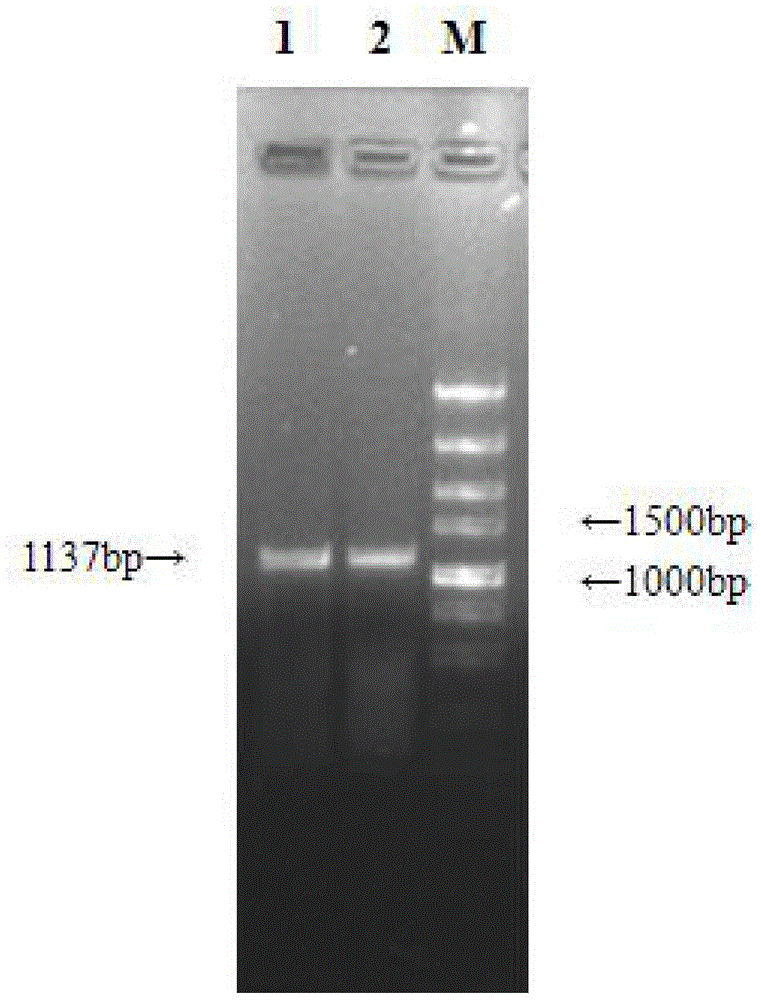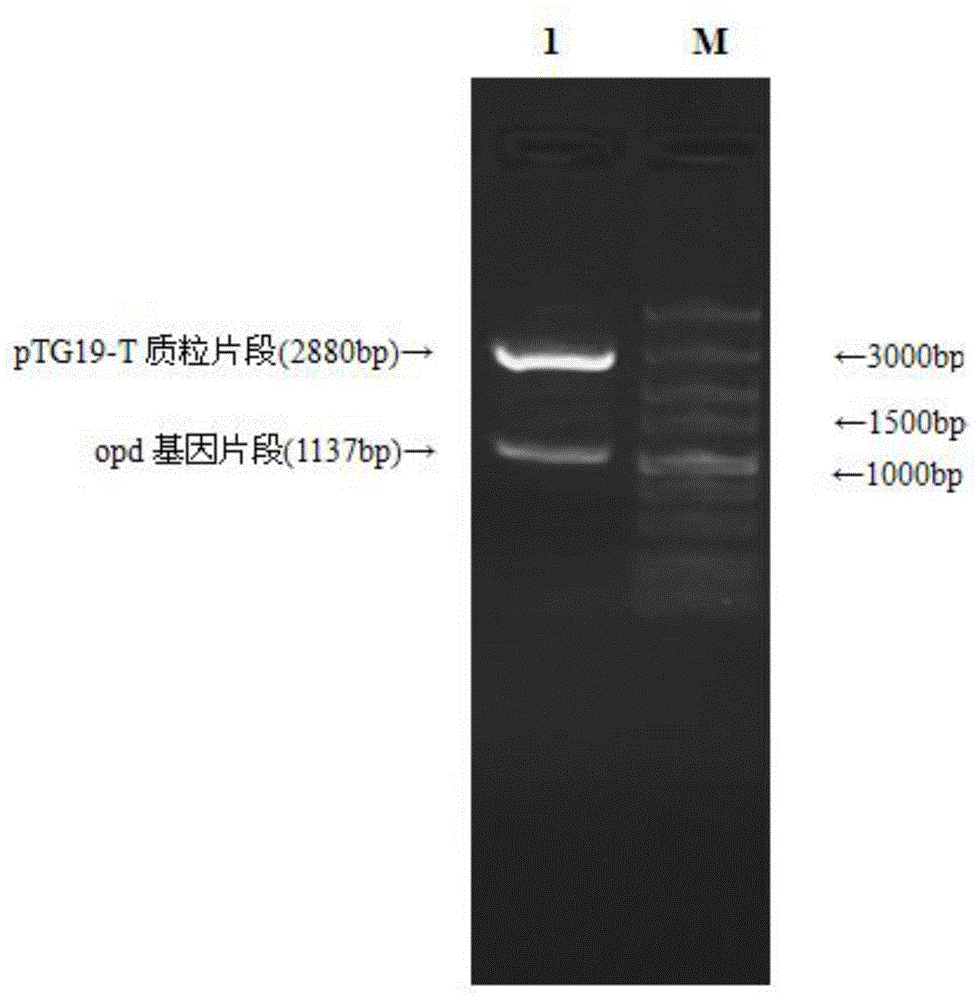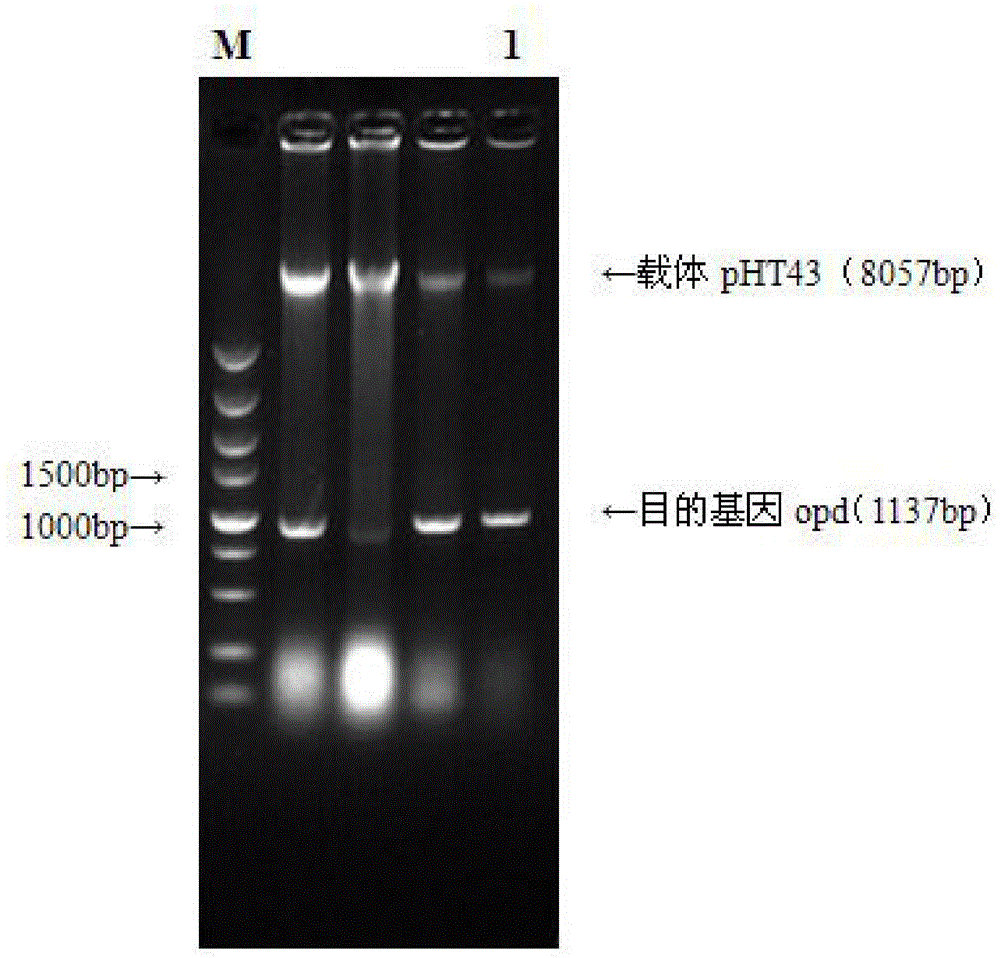Engineering bacterium capable of degrading organophosphorus pesticides, and construction method and application thereof
A technology of organophosphorus pesticides and construction methods, which is applied in the field of degradable organophosphorus pesticide engineering bacteria, can solve problems such as high content of organophosphorus components, decreased soil productivity, and ecological environment damage, and achieve the effect of high degradation ability
- Summary
- Abstract
- Description
- Claims
- Application Information
AI Technical Summary
Problems solved by technology
Method used
Image
Examples
Embodiment 1
[0031] The construction of embodiment 1 recombinant plasmid pHT43-opd
[0032] 1. Using the plasmid pDL2 carried by Flavobacterium as a template to amplify the opd gene
[0033]Extract the Flavorbacterium.spA TCC27551 plasmid pDL2, use the Flavorbacterium plasmid pDL2 as a template, synthesize primers, and amplify the opd gene sequence. The primer sequence is as follows:
[0034] P1:opda:5'-CGGGATCCCATGCAAACGAGAAGGGTTGTGCTC-3'; (SEQ ID NO.2)
[0035] P2:opds:5'-CGCCCGGGCATGACGCCCGCATCTTGACGGGGA-3'(SEQ ID NO.3)
[0036] The upstream primer (P1) introduces the BamH I site, and the downstream primer (P2) introduces the restriction site of Sma I. Two restriction sites were introduced at the 5' end to protect the bases.
[0037] The PCR product was analyzed by gel electrophoresis, and the size of the opd gene was about 1100bp ( figure 1 ), which is the expected size. After the PCR products were purified, they were sent to Nanjing GenScript Biotechnology Co., Ltd. for sequencin...
Embodiment 2
[0065] Induced expression of embodiment 2 transformants
[0066] Pick the monoclonal colony of the recombinant strain from the freshly transformed plate, add 5ml LB medium containing 5μg / mL chloramphenicol at 37°C, 200rpm, shake and culture for 10-12 hours, then inject 5ml culture solution into 50ml containing chloramphenicol culture medium to continue culturing. When the strain grows to the end of the logarithmic phase, the OD 600 =0.80, add IPTG to make the final concentration of IPTG 0.8mM, induce at 15-25°C for 15-20 hours, and obtain the engineering bacteria of the present invention. After screening, a strain CGMCC No.9272 with the highest degradation rate of organophosphorus pesticides was obtained, which was called Bacillus subtilis sp.LTG1 in this application. The degradation rate is respectively 4.4 times, 3.5 times and 4.1 times of the lowest strain (assay method with reference to Example 3).
Embodiment 3
[0067] Embodiment 3: engineering bacterium of the present invention is to the degradation of methyl parathion, malathion and acephate
PUM
 Login to View More
Login to View More Abstract
Description
Claims
Application Information
 Login to View More
Login to View More - R&D
- Intellectual Property
- Life Sciences
- Materials
- Tech Scout
- Unparalleled Data Quality
- Higher Quality Content
- 60% Fewer Hallucinations
Browse by: Latest US Patents, China's latest patents, Technical Efficacy Thesaurus, Application Domain, Technology Topic, Popular Technical Reports.
© 2025 PatSnap. All rights reserved.Legal|Privacy policy|Modern Slavery Act Transparency Statement|Sitemap|About US| Contact US: help@patsnap.com



